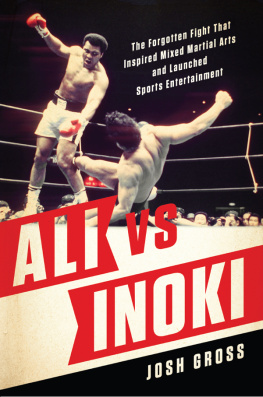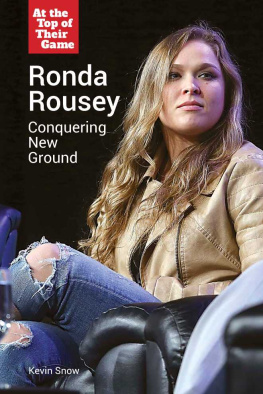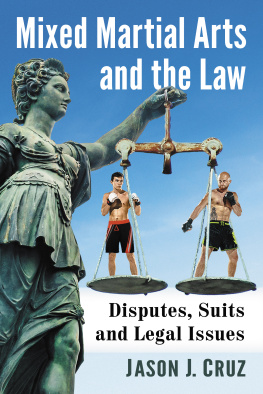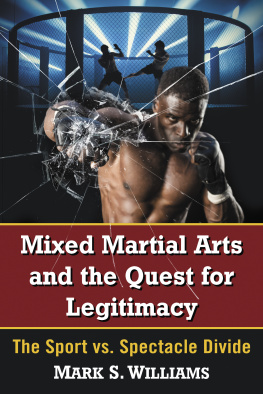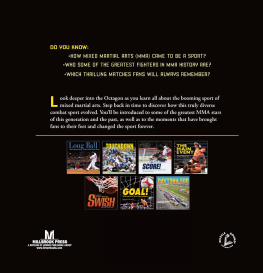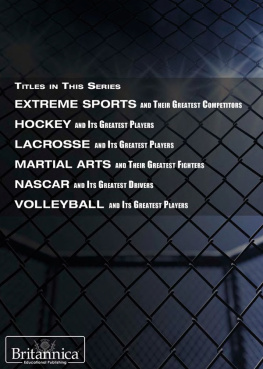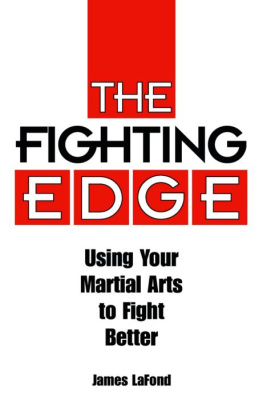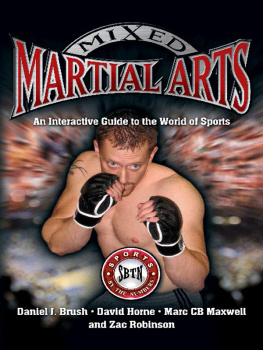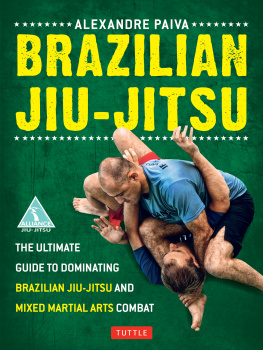Praise for Ali vs. Inoki
Its only fitting that Josh Grossan early MMA adopter and as fine a writer/reporter as the sport hasgives us this dispatch of an original boxer-versus-grappler contest. Our only question: Whens the movie coming out?
L. JON WERTHEIM, executive editor, Sports Illustrated
Copyright 2016 by Josh Gross
All rights reserved. No part of this book may be used or reproduced in any manner whatsoever without written permission, except in the case of brief quotations embodied in critical articles or reviews.
BenBella Books, Inc.
PO Box 572028
Dallas, TX 75357-2028
www.benbellabooks.com
Send feedback to
Printed in the United States of America
First E-Book Edition: June 2016.
Library of Congress Cataloging-in-Publication Data is available upon request.
ISBN 978-1-942952-20-6
Editing by Erin Kelley Indexing by Debra Bowman
Copyediting by Scott Calamar Text design and composition by
Proofreading by Brittney Martinez Aaron Edmiston
and Lisa Story Author photo courtesy of Eva Napp
Front cover design by Pete Garceau / www.evanapp.com
Full cover design by Sarah Printed by Lake Book
Dombrowsky Manufacturing
Distributed by Perseus Distribution
perseusdistribution.com
To place orders through Perseus Distribution:
Tel: (800) 343-4499
Fax: (800) 351-5073
E-mail:
Special discounts for bulk sales (minimum of 25 copies) are available. Please contact Aida Herrera at .
For my mom, who gave me the chance to tell this story
FOREWORD
I was a kid, all of eleven years old, when the fight between Muhammad Ali and Antonio Inoki took place in 1976. At that time, the two biggest names in martial arts were Bruce Lee and Ali. As a kid who got bullied because I suffered from a skin disease, severe asthma attacks, and being very skinny, I often dreamt: If I only had skills like them, the bullies would be in trouble!
Several years later, having beaten my childhood bullies, I watched the documentary Kings of the Square Ring. That was when I saw the match between Ali and Inoki, which took place in the Nippon Budokan in Tokyo. I would have never guessed that many years later Id successfully defend my Pancrase world title in that same arena by stopping Frank Shamrock.
Crazy how life goes, right?
Still to this day one of my biggest wishes is to meet the legend Muhammad Ali. This guy had it all: looks, charisma, skill, and he could walk the walk. Later in life, when I knew what pro wrestling waswe dont have pro wrestling in the NetherlandsI realized that Ali took a lot of notes from that art to promote himself. Getting everybody riled up, you either wanted to see him win or lose. Love him or hate him, he sold tickets.
The other great thing about the way he talked was that he made opponents really angry. And, when competing, anger is not something that belongs in the martial arts world because it clouds your mind.
I really liked Alis nonchalant way of approaching a bout, so I did it as well when I was fighting. Training and competing would be the serious part, so why not have fun in between? Plus this way fans could also connect with me and see a person not just a fighter, because lets face it, many people still perceive fighters as being angry all the time. I didnt want to be as outspoken as Ali was, though. Just being colorful was enough for me.
During my time competing in Japan, the name Antonio Inoki was mentioned in a conversation on many occasions. Everybody I talked to told me that he was not only a great pro wrestler but had real fighting skills as well. And, of course, the match between him and Ali would always come up.
Pro wrestling in Japan is called puroresuthats just the way they say pro wrestlingand its considered a strong style, meaning they use real submission holds and prefer to connect with hard strikes or not at all.
Many great wrestlers like Yoshiaki Fujiwara, Karl Gotch, Masakatsu Funaki, and Minoru Suzuki are considered strong-style wrestlers. And all these guys tie into Inoki. Inoki was Fujiwaras shisho (teacher). Fujiwara and Gotch were Funaki and Suzukis teachers.
I competed in Japan for the Pancrase organization from 1993 until 1998, and that organization was founded by Suzuki and Funaki. There were different rules than the ones we have in modern MMA. Open-hand strikes to the head, closed fist to the body; you wore shoes and shin protection it looked like pro wrestling, only its real. Unfortunately, we didnt use foreign objects like chairs to hit each other.
I was a striker. Growing up I studied karate, taekwondo, and Thai boxing. I always thought that strikers were the baddest dudes on the planet until I had my first submission class. For people who dont know how submissions work, lets just say that its about manipulating pretty much any limb in the direction its not supposed to go.
I was a good striker, but that submission class showed me that I wasnt a badass in fighting. They tore me up and I had no chance whatsoever. I got choked. Leg locked, armbarred. Neck cranked. You name it. I realized I needed to learn this art because if I were to miss a strike to an opponent and he was able take me to the ground, I would be in major trouble.
Chris Dolman was my first submission coach, but since his gym in Amsterdam was a two-hour drive from my home in Eindhoven, I didnt spend a lot of time there. When I was competing in Japan I would train at the official Pancrase Dojo. I would come in a few days earlier for the fight so I could hone my submission skills. It took me three losses by way of submission to finally make the decision that I needed steady training partners in Holland; otherwise this losing would keep happening. And that was itafter I found a training partner I never lost again and ended my career with an unbeaten streak of twenty-two.
Ill give you one story so you can understand why there were some rules changes just before the Ali and Inoki fight.
I was walking in Tokyo with a group of fighters the day before a match in 1994. We heard this big loud voice saying, Hybrid wrestling, Pancrase. We looked to the side and saw the biggest TV screen we had ever seen. When I say at least forty feet wide, I am not exaggerating. We were looking at the promo for our fight the next day; it was a compilation of KOs and submissions from previous events.
In that promo I saw a fighter sitting in a certain position and he went for an inverted heel hook on his opponent. An inverted heel hook is a move that enables you to twist the lower leg from your opponent while his upper leg stays in the same position. You can actually twist it about 180 degrees. Needless to say, thats not good for your knee since you can twist it out of the socket. Anyway, I was still green, only had four fights over there, so when I saw that technique I thought, Hey, thats a cool move, I should remember that.
The next day I am fighting and what do you know? I am in that position! So I figured, Lets try that thing I saw yesterday. Now since I had never trained for this, I had no clue what would happen; I just did what I had seen the day before on the big screen.

